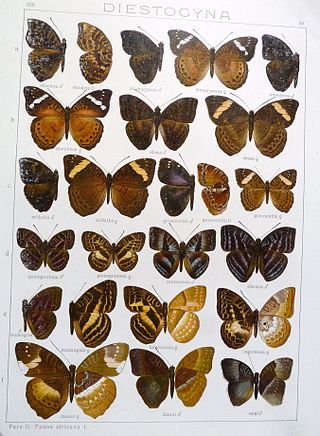
Rat snakes are members – along with kingsnakes, milk snakes, vine snakes and indigo snakes – of the subfamily Colubrinae of the family Colubridae. They are medium to large constrictors and are found throughout much of the Northern Hemisphere. They feed primarily on rodents. Many species make attractive and docile pets and one, the corn snake, is one of the most popular reptile pets in the world. Like all snakes, they can be defensive when approached too closely, handled, or restrained. However, rat snake bites are not dangerous to humans. Like nearly all colubrids, rat snakes pose no threat to humans. Rat snakes were long believed to be completely nonvenomous, but recent studies have shown that some Old World species do possess small amounts of venom, though the amount is negligible relative to humans.

Pantherophis obsoletus, also known commonly as the western rat snake, black rat snake, pilot black snake, or simply black snake, is a nonvenomous species of snake in the family Colubridae. The species is native to central North America. There are no subspecies that are recognized as being valid. Its color variations include the Texas rat snake. Along with other snakes of the eastern United States, like the eastern indigo snake and the eastern racer, it is called “black snake”.

Vitex agnus-castus is a plant native of the Mediterranean region. It is one of the few temperate-zone species of Vitex, which is on the whole a genus of tropical and subtropical flowering plants. Vitex is a cross-pollinating plant, but its self-pollination has been recorded.

Rhodopechys is a genus of finches containing the following two species:

The desert finch, sometimes called Lichtenstein's desert finch, is a large brown true finch found in southern Eurasia. Its taxonomy is confused, and it has formerly been placed in Fringilla, Bucanetes, Carduelis and Rhodopechys.

Elaphe is a genus of snakes in the family Colubridae. Elaphe is one of the main genera of the rat snakes, which are found in many regions of the northern hemisphere. Elaphe species are medium to large constrictors by nature.

The Texas rat snake is a subspecies of the black rat snake, a nonvenomous colubrid. It is found in the United States, primarily within the state of Texas, but its range extends into Louisiana, Arkansas and Oklahoma. It intergrades with other subspecies of Elaphe obsoleta, so exact range boundaries are impossible to distinguish. The epithet lindheimeri is to honor the German-American naturalist Ferdinand Jacob Lindheimer, who collected the first specimen in New Braunfels, Texas.

The eastern mudsnail, Ilyanassa obsoleta, is a species of sea snail, a marine gastropod mollusk in the family Nassariidae, the nassa mud snails.

The bare-faced ground dove is a species of bird in the family Columbidae. It is found in Argentina, Bolivia, Chile, and Peru.

The pale crag martin is a small passerine bird in the swallow family that is resident in Northern Africa and in Southwestern Asia, east to Pakistan. It breeds mainly in the mountains, but also at lower altitudes, especially in rocky areas and around towns. Unlike most swallows, it is often found far from water. It is 12–13 cm long, with mainly brown plumage, paler-toned on the upper breast and underwing coverts, and with white "windows" on the spread tail in flight. The sexes are similar in appearance, but juveniles have pale fringes to the upperparts and flight feathers. It was formerly considered to be the northern subspecies of the rock martin of southern Africa, although it is smaller, paler, and whiter-throated than that species. The pale crag martin hunts along cliff faces for flying insects using a slow flight with much gliding. Its call is a soft twitter.

In insect anatomy the arista is a simple or variously modified apical or subapical bristle, arising from the third antennal segment. It is the evolutionary remains of antennal segments, and may sometimes show signs of segmentation. These segments are called aristameres. The arista may be bare and thin, sometime appearing no more than a simple bristle; pubescent, covered in short hairs; or plumose, covered in long hairs.

Leucania obsoleta, the obscure wainscot, is a moth of the superfamily Noctuoidea. The species was first described by Jacob Hübner in 1803. It is found in Europe.

Mythimna obsoleta, the obscure wainscot, is a moth of the family Noctuidae. The species was first described by Jacob Hübner in 1803. It is found in Europe, from southern Fennoscandia to Spain, Italy and the Balkans, the European part of Russia, the Caucasus, Kazakhstan, Kyrgyzia, southern Siberia, Turkey, the Ural, Mongolia, the Russian Far East, the Korean Peninsula, China and Hokkaido and Honshu in Japan.

Euriphene obsoleta is a butterfly in the family Nymphalidae. It is found in Cameroon, the Democratic Republic of the Congo, Uganda and Tanzania. The habitat consists of forests.
Nomenia obsoleta is a moth in the family Geometridae first described by Louis W. Swett in 1916. It is found in western North America, from British Columbia, through Washington and Oregon to California.
Asura obsoleta is a moth of the family Erebidae first described by Frederic Moore in 1878. It is found in the Indian state of Sikkim and Borneo.

Hyalesthes is a planthopper genus in the family Cixiidae.

Agathia obsoleta is a species of moth in the family Geometridae first described by William Warren in 1897. It is found in Java, Sumatra, Borneo and the Philippines. A. obsoleta is a rare species of lowland forests, including heath forest.

Neurocordulia obsoleta, the umber shadowdragon, is a species of emerald dragonfly in the family Corduliidae. It is found in North America.
Phyllophaga obsoleta is a species of scarab beetle in the family Scarabaeidae. It is found in Central America, North America, and South America.

















